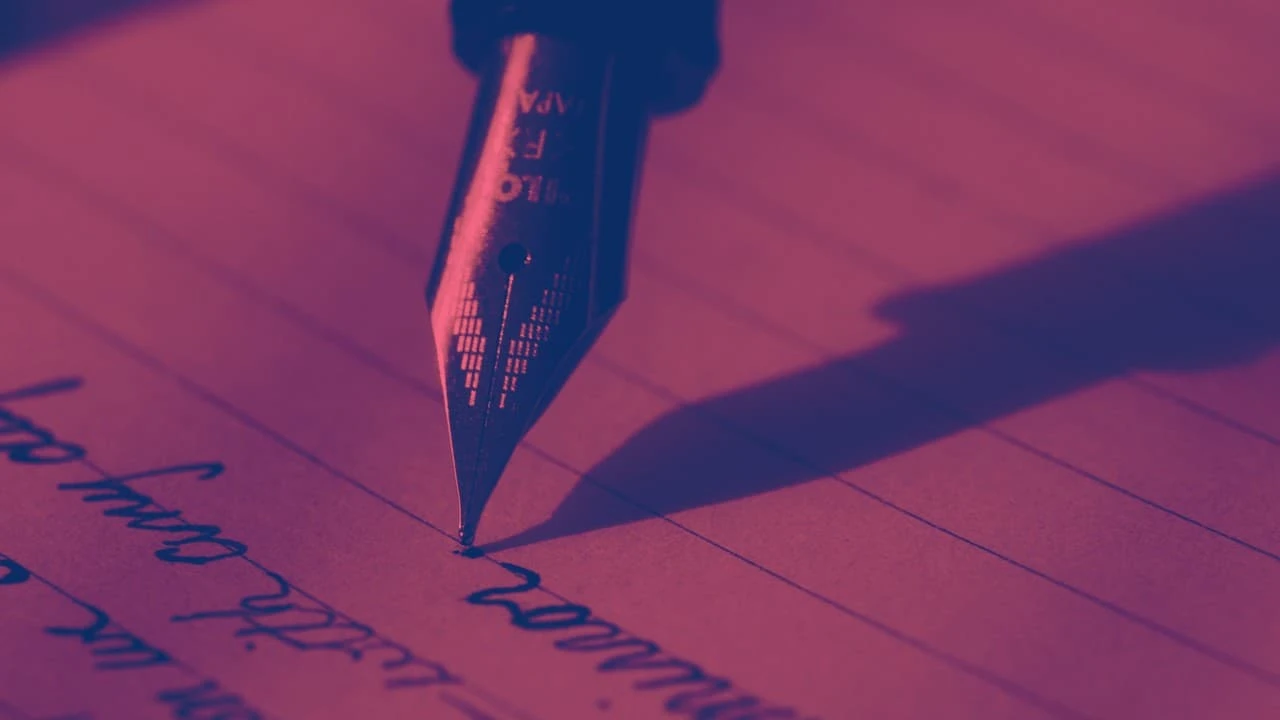Sometimes, marketing campaigns seem to have all the right ingredients — captivating visuals, solid content and a budget that allows it to reach lots of prospects — but somehow still fail to convert into big sales.
Why?
The difference could be one missing element in your marketing copy. Your sales copy could be one psychological cue away from delivering abundant sales.

Many firms say they’re “the best” or “the industry leader” without backing up their claims.
Why “we’re the best” isn’t good enough
I’ve been a full-time freelance copywriter for seven years now (with agency and publishing experience) and have written for just about every product you could think of* — from insurance to pet food, enterprise solutions to consumer technology and adult toys to early childhood development.
I’ve found that if there’s one thing most businesses have in common, it’s claiming they are “the best” in the market. Some traditional companies prefer the term, “industry leader”, which sounds just as unexciting.
I totally understand. You believe in what you’re selling, and sincerely think your brand’s products and services are the best in the country (or even the world). That’s why you want to announce that you’re “the best” or the “industry leader”.
Here’s the thing: even if you are the industry’s best, that line isn’t going to convince your potential customers. They’ve heard it all before. And if your prospect has spent enough time watching infomercials, they’ll know every brand out there loves to proclaim that they’re “the best”.
Have a look at this example:

This is how the rest of the page looks:
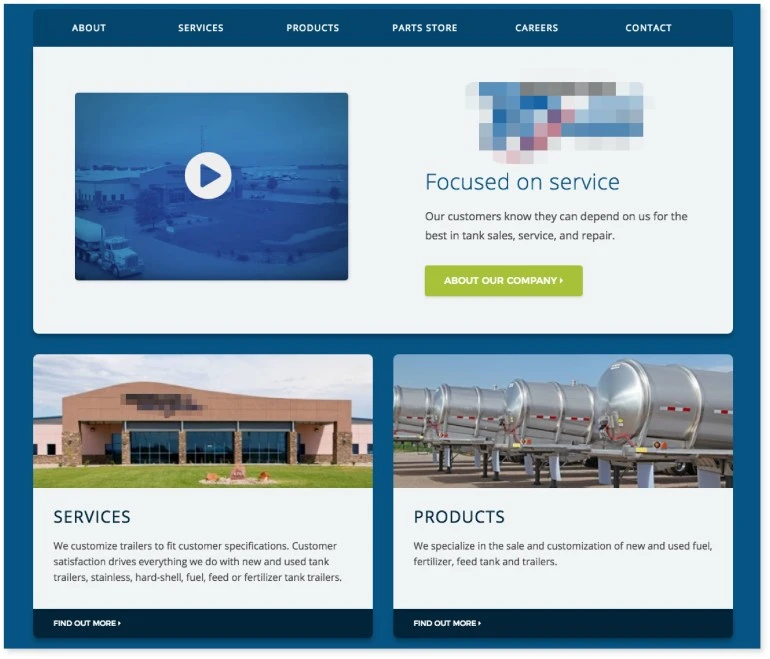
This company could very well be the industry leader in tank and trailer sales and services. But does this line (and the content on the rest of the page) convince you? For most people, the answer would be a firm “no”.
If only it were that simple to convince someone of a brand’s outstanding value.
Here’s a better example:
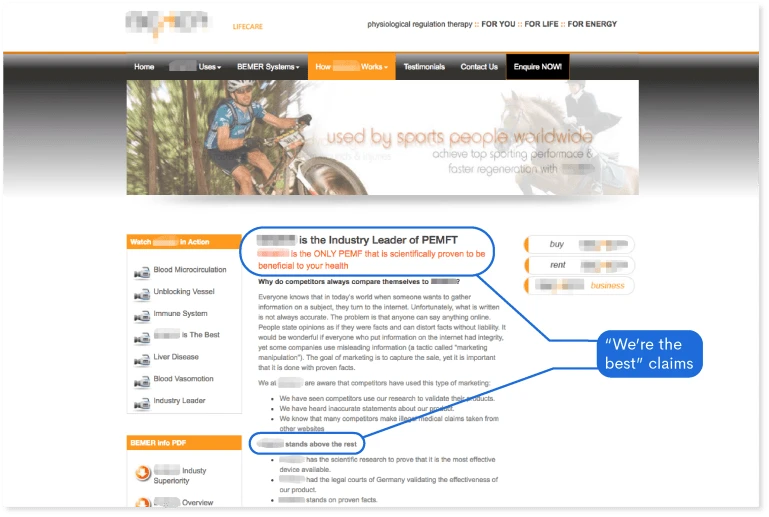
This is how their web page looks, and you can see their claim to be “the industry leader”.
This company does two things right.
Firstly, their claim is specific. The company isn’t merely “the industry leader”, it’s “the industry leader of PEMFT”, or pulsed electromagnetic field therapy.
To put this in another context, it’s like saying:
“Lionel Messi is the best sportsperson in the world.”
VS
“Lionel Messi is the best football player in the world.”
The first example may sound like hyperbole to fans of basketball, Formula 1 or other sports, while the second line is much more believable — especially if you back the claim with the numerous accolades Messi has collected throughout his illustrious career.
Speaking of backing up claims with facts, the company has done this as well. On the same page, it says:

They then go a step further by providing third-party validation of their claims, stating that they are “certified as the best” by the German Regional Court.
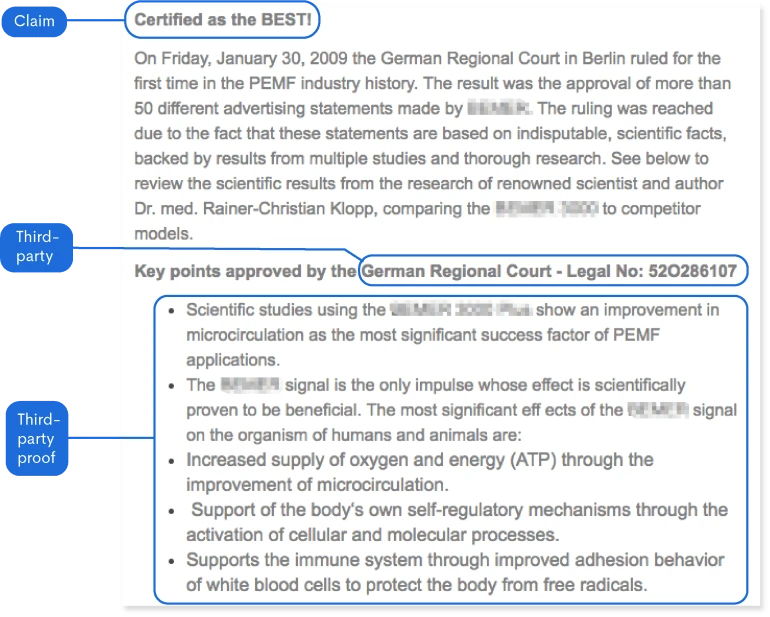
Finally, they sum it up with another statement on how they “stand above the rest” — similar to “we are the industry leader” — and therefore needs proof, which they provide in abundance.

Here, they’ve given prospects:
-
Specifics and numbers (e.g. “increases blood flow in microcirculation up to 24%)
-
Social proof in the form of certifications, features in health magazines, veterinary publications and medical journals and clients like Olympic medalists and world champions, although it would have been better if they had named some of these athletes.
Now, even if you’ve never heard of this company or the certifications they’ve earned prior to reading this, most people would agree that this company seems credible, or at least a lot more reliable than any of their competitors who may advertise themselves as “the industry leader”.
What happened? How did a brand that was unknown to the readers, suddenly build credibility with a single web page?
This company used numbers, percentages, specificity and social proof to give themselves credibility — not after a month-long PR campaign, or 50 impressions on print and TV — but in minutes, by using psychological cues on just one web page.
These are the same psychological cues that you can use to sell your brand, products and services.
What are psychological cues?
Psychological cues are small cues in your marketing copy that can:
-
Shape the way readers think about your brand
-
Trigger buying behaviour
According to Dr Susan Weinschenk, author of Neuro Web Design: What makes them click?, well-practised skills don’t need thinking. This is because repetition changes your brain, forever changing the way you think about something.
Similarly, psychological cues speak to the ‘primal mind’ (that’s the part of our mind that acts instinctively, without conscious thought) and can elicit thoughts and behaviours in readers, without them even knowing. The example above is an example of psychological cues in action.
Psychological cues in marketing copy can be a secret weapon against your competition, especially if they’re still insisting on listing out their product features and talking about how they’re “the best”.
Does this sound familiar?
All of us have been on the receiving end of psychological cues — whether we’ve realised it or not.
Have you ever found yourself handing your credit card over for a product or service you barely thought you needed just 20 minutes ago? (Let’s say, an insurance plan, electronic gadget, home appliance or gym membership?)
You’re not alone.
You may or may not have noticed the salesperson using deft psychological cues to trigger automatic responses from you. Here are a few you may remember:
“Did you bring your driver’s license with you?”
“Would you prefer it in blue or red?”
“Do you have MasterCard?”
These cues are often brought up early on in the conversation, even before you’ve made a purchase decision. By asking you these questions, the salesperson effectively fast-forwards the sales process by getting you to either think about paying for the item, taking out your credit card or signing a form way before you say “yes” to the purchase.
Once people take these steps, most individuals merely follow through and complete the purchase.
That’s the power of psychological cues in real-life sales situations.
And marketers can implement these cues into copy too. Here are a few useful tips you can put into practice right away.
Use numbers, they’re more credible than statements
Infographics are a recent marketing trend. Aside from being aesthetically pleasing, the best infographics emphasise the use of figures and statistics.
Let’s compare these two statements:
98% of reviewers gave our headphones a 5-star rating!
VS
Reviewers love our headphones!
At first glance, the second statement sounds fantastic. It’s snappy, confident and easy to read. Perfect marketing material!
Or is it?
Looking closer, you’ll realise that while the second statement reads better, the first sentence gives readers definitive proof that your product is excellent. After all, it’s not you who’s saying so — it’s 98% of reviewers, whom readers usually consider to be unbiased.
We’ve all heard the phrase, “numbers don’t lie”. Our brains tend to trust numbers a lot more than statements (even though we know that numbers can be manipulated).
In an article for the Newspaper Research Journal, Dr Willem Koetsenruijter of Leiden University hypotheses that numbers are used in journalistic articles to make sources sound more reliable.
Naturally, you’d want the same for your marketing materials.
Wherever possible, use numbers and statistics in your marketing copy to instantly boost the credibility of your marketing message.
The magic of “How to” titles
Want to know the most effective way to get people to click on your blog post, watch your YouTube video, or download your podcast?
Add the words “how to” into the title. That’s it.
You’ve probably seen dozens or even hundreds of articles, videos and podcasts that start like this:
“How to lose 5kg in 10 days”
“How to earn $10,000 a month working from home”
“How to toilet train your puppy in seven days”
Here are a few I found in a quick Google search:

- Look at those view counts! People really love clicking on well-titled “how to” videos.*
The “how to” title also works well for blog articles:
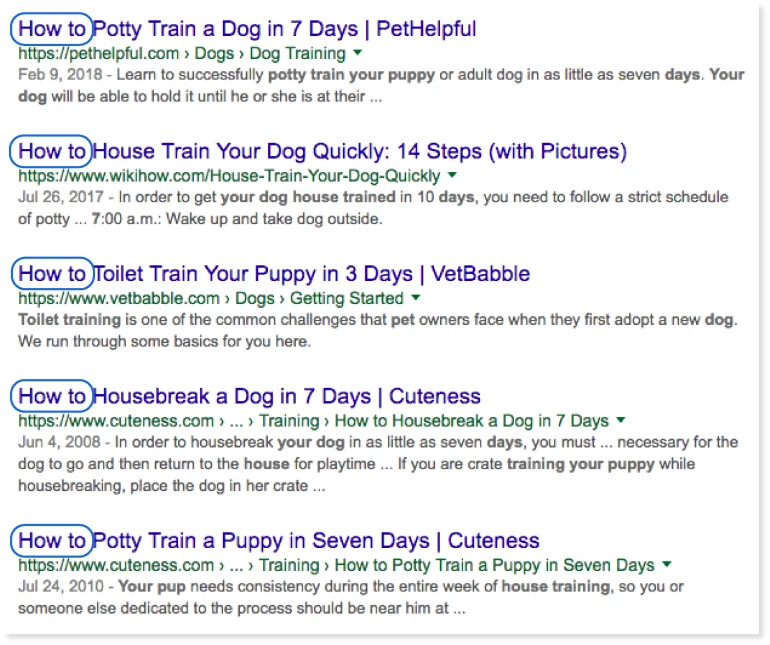
Why does this work?
While many marketers want to produce innovative and cutting-edge material, this faithful psychological cue works because “how to” isn’t new or innovative. Instead, it’s something people have seen over and over again — and presumably, it’s something that delivers results.
For example, if you’re looking for a cure for hiccups and arrive at an article titled “How to cure hiccups in 60 seconds”, you’ll find tips that would probably relieve you from your suffering.
And for many people, because they have experienced this cycle so many times, their brains now automatically (and subconsciously) link “how to” articles or videos with “effective solutions”. This is related to associative learning — a form of conditioning — which suggests that behaviour can be modified or learned based on a stimulus and a response.
So, if you’re using articles, videos or podcasts to market your business, remember to leverage this psychological cue. Here are some examples you can tweak for your products and services.
“How to extend Wi-Fi coverage to your entire home with a mesh network”
“How a $200 investment each month can turn into $500,000 for retiring”
“How to pass IPPT with only two workouts per week”
Persuade with social proof
Sometimes, even the best marketing copy can only do so much. After all, prospects know that you are trying to sell them a product or service. And this final step could be the last hurdle you need to overcome to turn potential customers into actual customers.
At this point, they need a third-party to assure them and let them know that purchasing your product is the right thing to do. You could wait for prospects to text their friends or turn to the Internet for opinions, or you could offer them honest and unbiased third-party views of your business.
And you can do this with ease, using social proof.
What is social proof, and how can you incorporate it into your marketing copy? Social proof is evidence that the public believes in your products and services. Before the Internet, social proof was when your friends would rave about a fantastic restaurant across the street.
Today, social proof can also come in these forms:
-
Testimonials
-
Reviews
-
Studies
-
“Customers also purchased” recommendations (especially useful for e-commerce)
Social proof is incredibly powerful and can transform your prospects into customers in minutes. In fact, according to the Local Consumer Review Survey 2017, 84% of online consumers trust reviews as much as they trust personal recommendations.
Here’s one of my favourite examples of social proof in action. This website belongs to a singing coach who calls himself the “number one vocal coach in the US”.
Now, that’s a big claim — especially considering the talent pool of vocal coaches in the US. Do the marketing messages on his website back up his claim? Let’s have a look at his landing page:

Some psychological cues on this landing page:
-
The first thing you’ll see on this page are three incredibly well-known singers. This is outstanding social proof. At this point, most visitors would already be thinking, ”If Selena Gomez, John Mayer and Gwen Stefani trust this vocal coach, he must be the real deal.”
-
He’s also using an Internet marketing cliche, “What’s the secret to…”. Without the social proof these three superstars provide, this line could be gag-inducing. But with powerful social evidence verifying that he’s a legitimate expert — prospects want to know the secret (and will pay good money to do so).
-
His claim to being the “number one vocal coach in the US” is a bullet point that he uses only after he’s given you lots of social proof to help you believe his claim. Remember the “we are the industry leader” example earlier? This is the best way to utilise it well.
And just in case potential customers need more social proof, he uses well-known awards to sell himself further. Now prospects realise that he hasn’t merely trained three pop stars, but his clients have won numerous industry and career-defining awards:

Even more impressive: he uses testimonials and numbers (“over 130,043 happy singers”) as social proof that his methods work with regular singers too — just like you (the prospect).
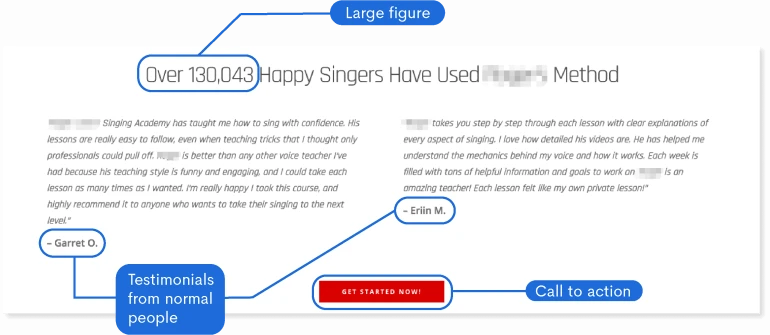
These are just a few of the many psychological cues you can use in your marketing copy to trigger buying behaviour in your prospects. (Or at the very least, bring them several steps closer to becoming a customer.)
Try these cues out with your existing or upcoming marketing copy and measure the results. You may be pleasantly surprised at how compelling these simple tweaks can be.
Note: I’m not endorsing any of the brands or people featured in this article. The screenshots are used to illustrate fundamental concepts of psychological cues used in marketing copy.
